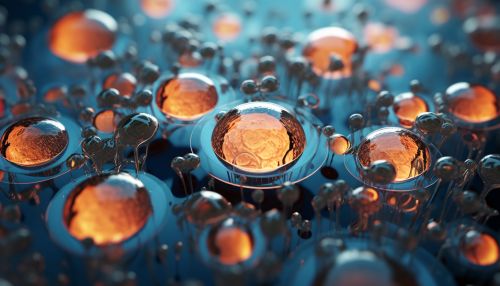Catabolism
Introduction
Catabolism is the set of metabolic pathways that break down molecules into smaller units to release energy. It is a vital process in living organisms, as it allows them to obtain the energy necessary for their survival and growth. This process is part of the larger metabolic system, which also includes anabolism, the set of pathways that construct molecules from smaller units.


Overview of Catabolism
Catabolism involves the breakdown of complex organic molecules into simpler ones. This process is usually oxidative and involves the release of energy, some of which is lost as heat, while the rest is used to drive the synthesis of adenosine triphosphate (ATP), the energy currency of the cell. The catabolic process begins with the ingestion of food, which is then broken down into smaller molecules through digestion. These smaller molecules are then transported to the cells where they are further broken down through various catabolic reactions.
Catabolic Pathways
There are several catabolic pathways that cells use to break down molecules to release energy. These include glycolysis, the citric acid cycle, and oxidative phosphorylation.
Glycolysis
Glycolysis is the metabolic pathway that converts glucose, the primary carbohydrate, into pyruvate. This process produces a net gain of two ATP molecules and also generates two molecules of NADH, a carrier of electrons. The end product, pyruvate, can be used in several ways depending on the needs of the cell and the availability of oxygen.
Citric Acid Cycle
The citric acid cycle, also known as the Krebs cycle or the tricarboxylic acid cycle, is a series of chemical reactions that generates energy through the oxidation of acetyl-CoA derived from carbohydrates, fats, and proteins into carbon dioxide. This process also provides precursors for many compounds that are needed for the anabolic processes of the cell.
Oxidative Phosphorylation
Oxidative phosphorylation is the metabolic pathway in which the mitochondria in cells use enzymes to oxidize nutrients, thereby releasing energy which is used to produce ATP. This process is the primary method of producing ATP in cells and is the final stage of cellular respiration.
Regulation of Catabolism
The regulation of catabolism is essential for maintaining the energy balance within the cell. This is achieved through a complex network of signaling pathways and feedback mechanisms. One of the key regulators of catabolism is the hormone insulin, which promotes the uptake and storage of glucose, thereby reducing the rate of catabolism. On the other hand, hormones like glucagon and adrenaline stimulate catabolic processes to increase the availability of glucose and fatty acids for energy production.
Clinical Significance
Abnormalities in catabolic processes can lead to various diseases. For instance, deficiencies in the enzymes involved in glycolysis or the citric acid cycle can lead to metabolic disorders. Moreover, uncontrolled catabolism can lead to muscle wasting and weight loss, as seen in conditions like cancer and AIDS. On the other hand, insufficient catabolism can contribute to obesity and type 2 diabetes.
